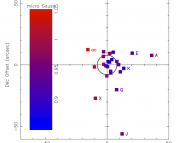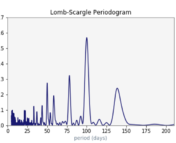
The undergrad research series is where we feature the research that you’re doing. If you’ve missed the previous installments, you can find them under the “Undergraduate Research” category here.
Are you doing an REU this summer? Were you working on an astro research project during this past school year? If you, too, have been working on a project that you want to share, we want to hear from you! Think you’re up to the challenge of describing your research carefully and clearly to a broad audience, in only one paragraph? Then send us a summary of it!
You can share what you’re doing by clicking here and using the form provided to submit a brief (fewer than 200 words) write-up of your work. The target audience is one familiar with astrophysics but not necessarily your specific subfield, so write clearly and try to avoid jargon. Feel free to also include either a visual regarding your research or else a photo of yourself.
We look forward to hearing from you!
************
Andrew Hoffman and Yukei Murakami
University of California, Berkeley
Andrew Hoffman and Yukei Murakami are senior undergraduate students at UC Berkeley, both double majoring in Physics and Astrophysics. They conducted this research over the course of a year under the guidance of Dr. Alexei V. Filippenko. Preliminary results for this project were presented at the 236th AAS meeting and was recognized with the Chambliss Student Achievement Award’s Honorable Mention.
Last year, the temporary dimming of the star Betelgeuse caused much excitement in the astronomical community. Although many people believed this to be the sign that the star was going to go supernova, scientists believe that these changes were actually the result of stellar pulsations – the cyclical brightening and dimming of variable stars. Astronomical objects often vary in brightness over time, but this is usually a cyclical effect such as we see with Betelgeuse, rather than a transition to a different part of the star’s life cycle (this “true evolution” takes place on very long timescales and is difficult to see, especially in a human lifetime). An example of true evolution which can be observed in a human lifetime is the period change in pulsating variable stars, of which RR Lyrae variable stars are among the most common. Detecting this effect in RR Lyraes requires high-precision data points decades apart.
To explore this, we conducted independent observations of the globular cluster M15 on about forty nights over the course of a year, and were able to obtain a well constrained period value for 50+ RR Lyrae stars in M15 with periods ranging from ~0.3-0.7 days (7-18 hours). In Figure 1, we can see the resulting well fitted lightcurve (brightness vs. time function). During this analysis, we found that existing methods, such as the Lomb-Scargle Periodogram, were often inaccurate for widely separated data, so we implemented an algorithm to search for the period in Chi-square potential space using the period value as a free parameter. This method yields much more accurate results as well as a better understanding of the systematic uncertainties. Using our results as a data point, we searched publications going back over one hundred years to build a long term trend line [Figure 2]. On average, we detect a change of ~ days in the period per year – just milliseconds over one hundred year data range!
If you are an undergraduate that took part in an REU this summer and would like to share your research on Astrobites, please contact us at [email protected]!
Featured image credit: Hubble


